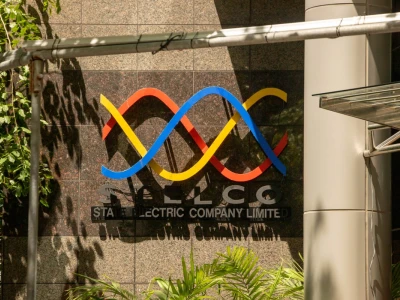
Flat rate billing for electricity likely from Jan, says STELCO
Shareef said the increase in electricity consumption and higher bands under the current rules is one of the reasons for the increase in bills.
By
Ahmed Sadhoof Moosa
Managing Director of State Electric Company (STELCO) Ahmed Shareef said on Sunday that discussions are underway to fix a flat rate for electricity bills as announced by President Ibrahim Mohamed Solih and that it can be introduced by January.
Speaking at a rally held at MDP's Huvadhoo camp on Maveyo Magu on Thursday night, MDP's presidential candidate, President Ibrahim Mohamed Solih announced that in order to reduce the price of electricity bills, the bands used in calculating electricity bills from households will be abolished and billed at a flat rate.
However, the president did not give any details that night.
STELCO Managing Director Ahmed Shareef spoke on the president's promise on the Fala Suruhee show on Raajje TV Sunday evening.
“We expect to be able to implement this [of electricity billing at a flat rate] within the first two or three months of our second term,” Shareef said.
Referring to the discussions being held with the government and other agencies before billing electricity at a flat rate, Shareef said:
-
The tariff rate to be fixed is under discussion
-
Billing electricity at a flat rate will affect STELCO's revenue
-
Research is also underway to see how much income can be afforded to be reduced and how much can be maintained
“The first thing is that we are in discussions with the government authorities on what the tariff rate will be,” he said.
"However, while we are discussing a policy decision that has been made recently, we are studying the work of the company, for example, STELCO, to what extent the revenue will be reduced and to what extent that revenue will be retained."
Shareef said under the current rules, if the bill is for 1,000 units, it can be billed in all seven bands.
STELCO, the state-owned electricity provider in the Male area, now bills by categorising electricity consumption and dividing it into bands. So far, the electricity billing has been:
-
For the first 100 units - MVR 1.50 per unit
-
Between 101 and 200 units - MVR 1.70 per unit
-
201 to 300 units - MVR 2.15 per unit
-
Between 301 and 400 units - MVR 2.50 per unit
-
400 to 500 units - MVR 2.95 per unit
-
501 to 600 units - MVR 3.55 per unit
Referring to the bands, Shareef said if MVR 1.50 is charged per unit, the smallest of the seven bands, is fixed at a flat rate, it will reduce the bills of the public by 31% and 52% respectively.
Shareef said the increase in electricity consumption and higher bands under the current rules is one of the reasons for the increase in bills. He said the President's decision was very courageous and important.
"This is really a very, very brave and very important and very sincere policy that can only be determined by someone who thinks with compassion towards the people. So it is very important," Shareef said.
"If you use 1,000 units and use 500 units with a flat rate and the seven bands I mentioned, they will go to the same band. After that, even for 500 users, 1,100 unit users and above, if it becomes a meter used by people in their daily lives, it will be billed at a flat rate."
Shareef cited examples of electricity consumption by STELCO customers. Shareef said:
-
The number of STELCO customers is 77,275; of these, 60,509 are households
-
Of these, 53,412 are customers in the Male region and 7,096 are customers from the atolls (K., A.A., A.Dh., V.)
-
Of these, an average of 28% of customers have 600 units of electricity consumption and are billed at MVR 4.2 per unit
-
40% of customers use below 500 units on average
"On average, there are 40% below 500 units. That is one of the reasons for the high usage of electricity bills. The tariff rate is fixed in consultation with the utility companies and the URA," he said.
"When we set a flat rate, for example, if it is the first rate, it is 1.50. If it is a flat rate, the bill will be reduced by between 31% and 52%."




